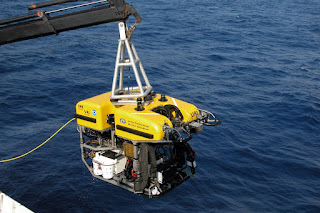The Basic LARS for work-class ROVs is based on the high-end program. It uses the same quality steel components and features such as docking head versatility, double angled A-frame and gentle handling of umbilical are maintained.
Launch and recovery system for ROV (LARS)
Remotely managed vehicles play a key role in subsea functions, and the comprehensive profile concentrates on active heave compensated techniques. The LARS is intended to handle the biggest perform category ROVs to absolute depths going above 4000 meters, implemented over the side or through the moon pool.
Our techniques are developed, designed and qualified with great focus on the smooth handling of umbilical and third-party devices. With the price and time loss you experience with a broken cable, it is important to us to provide techniques which help our customers to increase umbilical lifetime and reduce minimise operation downtime. Secure managing of ROV devices on deck is assured by the remote-controlled pallet skid system that enables the full deck area to be used.
LARS is installed on the stern of a ship. For launch, the launch and recovery system has a built-in A-frame, which tilts the support up and over, while making the vehicle hanging by its nose well away from the fantail. The support props up vehicle during A-frame spinning, backing the vehicle until it is a secure distance from the stern. The docking head provides damping to reduce movement in heavy seas.
The vehicle is then lowered into the water; end first, while the ship is making approximately 1–2 troubles forward way (this allows the vehicle to stay well away from the delivers screws). All techniques are given one final check out before launch. When ready, the vehicle is instructed to discharge its tow-line and begin its objective.
Acoustic communications and positioning are vital aspects of unmanned marine vehicle functions. The use of individual models on each vehicle has become an issue in terms of frequency bandwidth, space, power, and cost. Most vehicles rely on acoustic modems transmitting frequency-hopped multiple frequency-shift keyed sequences for command-and-control functions, which can be used to identify the vehicle with a good level of precision without demanding extra signal transmission. An Ultra Short Baseline acoustic positioning technique has been developed, simulated, and examined to identify an acoustic device source in three measurements using a tetrahedral, half-wavelength acoustic antenna.
USBL is a means of offering a place of the ROV using means. It works by using a Differential Global Positioning System (DGPS) produced place and a precise going, message, roll and heave sensor to position a transceiver sustained a boat on the surface. The transceiver is provided with a phased transducer array capable of solving both varieties and keeping to a transponder or -responder sustained the ROV. Since the position and attitude of the transceiver on the boat is known, the absolute position of the ROV is able to be produced by mixing that place with the comparative variety, detail and keeping from the Ultra Short Baseline system. This makes for the most simple and efficient means of offering a place in open the water conditions.
Source: https://bit.ly/2I8cNfE

No comments:
Post a Comment